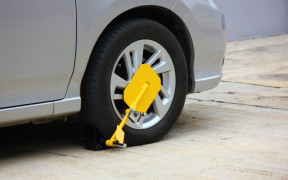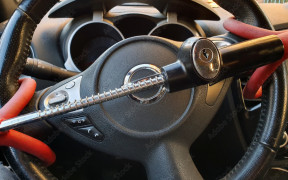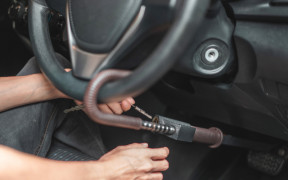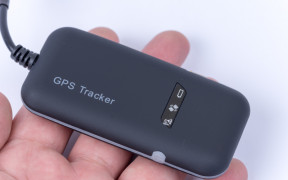The past, present and future of vehicle security
It’s the end of a long, hard day and sleep is needed. The kind of sleep that kicks in about 5 seconds after your head hits the pillow and you don’t move until at least 8 hours later. Except after 4 seconds there’s this deafening high-pitched sound from the street below. Instinctively, you pull the pillow from under your head and use it to smother yourself. It’s that car alarm. Again.
Everyone can likely remember something similar to this happening when home. Some might have even walked to the window to take a look at where the noise was coming from. But the chances are most of us ignored the alarm and silently swore at the vehicle’s owners, imploring them to turn it off.
To be fair, it's an unlikely scenario nowadays. Car alarms have become much more sophisticated and manufacturers have stopped them from wailing every time a falling leaf drops onto the bonnet. Indeed, just how far the humble car alarm has come is quite interesting.
The first automobile theft
Automobile Club de France is the oldest automobile club in the world. It was founded in 1895 by, amongst others, a chap with the wonderful name of Baron Etienne van Zuylen. The banker from Utrecht was the Clubs first President and was often seen driving around in his Peugeot. That was, until it was nicked. Given cars were rarer than houses with electric lightbulbs it didn’t take long for the Police to shine a light on the dim-witted perpetrator and track the car down. Especially as old Baron van Zuylen had taken it to a mechanic for repair and it had gone missing from there. Because it was the mechanic that stole it. In all fairness, business must have been pretty slim for an auto mechanic in 1896.
Car crime must have had some appeal for enterprising crooks though. In 1900, Leach Automobile (USA) developed a removable steering wheel as an anti-theft device. The driver just removed the steering wheel and carried it with them. We can’t help but think this may have been a failure though. You’d just wait until the owner sat down in a restaurant and placed his wheel by his feet, before having it away. Then you could go and choose whichever steering wheel-less vehicle you wanted to drive away. Then you’d no doubt use the same wheel to steal another, and another.
Part of the issue was most cars didn’t have doors, so there was nothing to lock. And with many starting by simply turning the crank at the front, it really didn’t take anything other than a bit of strength to steal one. Even Henry Ford used to chain his own vehicle to a lamppost to prevent it from being stolen. So, it was a somewhat bizarre twist when an inmate in a Denver prison came up with the first solution.
SOME OLD-FASHIONED CAR SECURITY DEVICES
The first car alarms
He remains nameless. Forever destined to be known simply as the ‘unknown Denver prisoner’. Yup, it was an inmate who invented the first car alarm. In 1913 an unknown prisoner came up with the idea for a mechanical alarm that would be triggered when someone tried to hand crank the engine. You hope he got some time shaved off his sentence or old man Ford showed up at his parole hearing to lend a kind word.
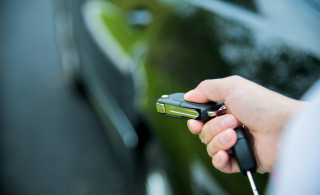
It wasn’t until March 1918 when the first patent for an alarm was registered, by St. George Evans and Edward Birkenbuel, both from Portland. Although it was really more of an immobiliser than an alarm. Through a complicated series of switches, the driver effectively got to set a combination which would need to be ‘inputted’ via key for the engine to start. Failure to get the switches in the right position would result in the engine being incapacitated and the horn left blasting until the battery was dead. Those nearby must have been the very first to try and smother themselves with a pillow so they could block out the noise and sleep. So yes, George and Edward are to blame.
There were no doubt other variations of alarms and a few homemade contraptions. But no mass produced system would be available until 1954 when Victor Helman came up with a device which would sit in the glove box. Sprouting out from the device was a series of wires connected to the bonnet, boot and doors of the car. If any of them were opened without first disabling the master switch somewhere on the outside of the car, then an alarm would sound. Again though, hardly foolproof and a bit like knowing there’s a ‘hidden’ spare key by a front door somewhere. It’s just a matter of time before thieves can find it.
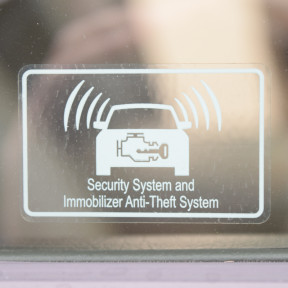
Alarms as standard
The so-called golden age of motoring really kicked in during the 60’s. In the United States, there were rising rates of juvenile delinquency as rebels without a cause took to joy-riding and stealing cars in big numbers. No doubt it was mostly to park up at those outside movie theatres or fast food places where you got served at your vehicle by someone on roller-skates. So, as the 1970’s commenced, Chrysler decided enough was enough and became the first vehicle manufacturer to install OEM car alarms in their larger vehicles. The trouble is…they were pretty useless. Indeed, vehicle thefts went from 928,400 in 1970 until peaking at just over 1.6 million in 1991. They’ve generally been in decline since then and now sit at a pretty consistent 700,000+ every year.
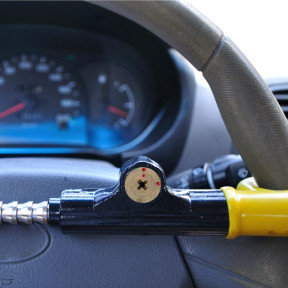
Aftermarket alarms varied during this period and there’s too many to cover. Yet special mention should be made of the humble steering wheel lock. Invented in 1986 by Jim Winner after his Cadillac was stolen, the device named ‘The Club’ went on to sell over 10 million (and counting) units. The premise is simple; “if you can’t steer it, you can’t steal it”. Of course, you can remove the steering wheel lock if you know how but it’s a decent visual deterrent and most folk of a certain age will remember them. Indeed, versions are still for sale today in your local auto parts store.
How secure are modern vehicles?
With modern technology comes modern problems. There’s an issue here too which many of us are likely unaware of. Let’s compare a mobile phone to make the worrying point. Hackers are always trying to get into your mobile. That’s why you always get those annoying updates for ‘bug fixes and security improvements’. Because you need them. But lots of of vehicle system don’t get updates. So once thieves have worked out how to get past your security, that’s pretty much it. And all that fancy, connected technology has actually made it easier.
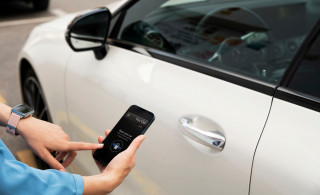
Let’s say your keys work on proximity and the RFID signal lets the vehicle know you’re close by so you can open the door and then hit the start button. A simple relayer can be placed near to you as you sit down at a cafe. It picks up the signal from the key and relays it to an accomplice standing by the vehicle. Easy as.
Or maybe you head into town, park up and hit the lock button on the key fob as you walk away from the car. A signal jammer will stop the locking mechanism from working so the thief can just hop in, hotwire your motor and have it away. In fact, they don’t even need to hotwire the car. Most will have a diagnostic port in the footwell and the thief simply plugs into that and a bit of software starts the engine. It takes under 30 seconds and the gadgetry needed can be bought for less than $20 off the internet.
So what about a Tesla? Surely that’s hard to steal? Yes, it is. Out of the 115 Tesla’s stolen in the US between 2011 and 2018, 112 of them were successfully recovered. That’s a pretty outstanding statistic and down to a few reasons. Number 1 is that the owners simply launched the Tesla app on their smartphone and provided real time tracking info to the Police. Number 2 is there’s no quick pit stop with a Tesla, so when they run out of juice there’s generally plenty of time for the authorities to swoop. The 3rd reason is ever cooler. ‘Sentry Mode’ means if someone smashes the window just to grab some valuables, the video camera is activated and you get to capture the thief on camera.
This doesn’t mean they are unstealable though. In Europe, sophisticated hackers managed to grab a load and then chop them up before they could get caught. But being a connected vehicle Tesla simply updated the security software to stop it from happening again.
So there we have it. Your vehicle might still get nicked. It’s just likely to be by a group of 17 year computer whizzkids. Which gets us thinking…much like they likely can’t use a phone with a rotary dial, the steering wheel lock might defeat them. You can’t hack that with a smartphone. Yup, that might just be the future of vehicle security.

Looking for safety? Choose the right tyres!
More tips and articles
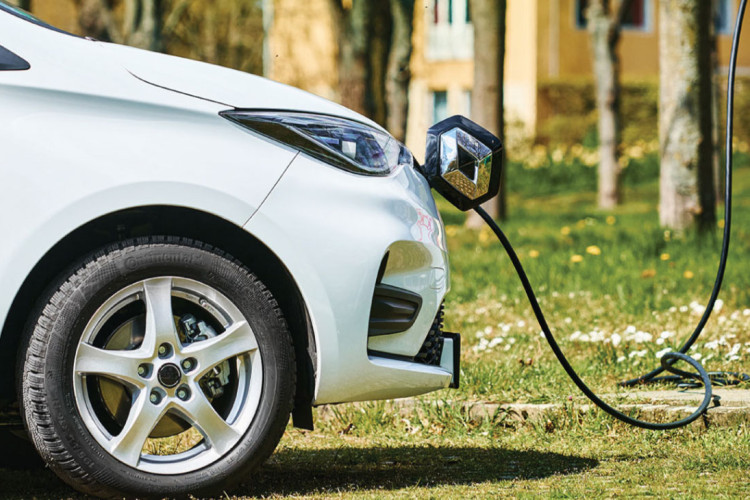
Tyres for Electric Vehicles
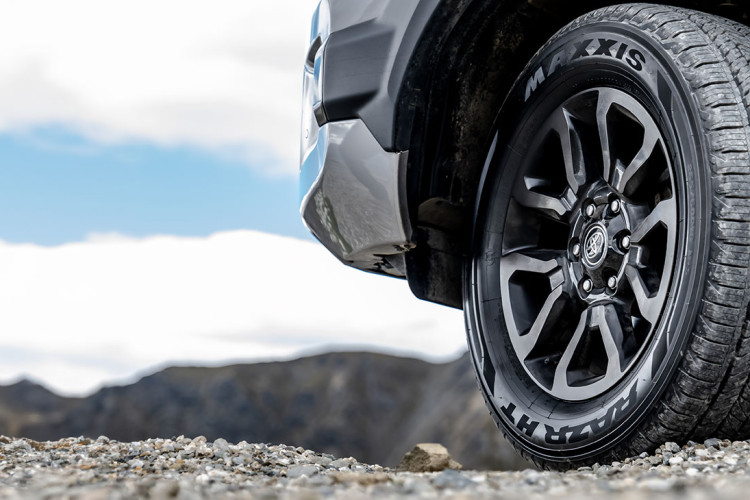
Product Spotlight:
Maxxis HT780 RAZR HT


